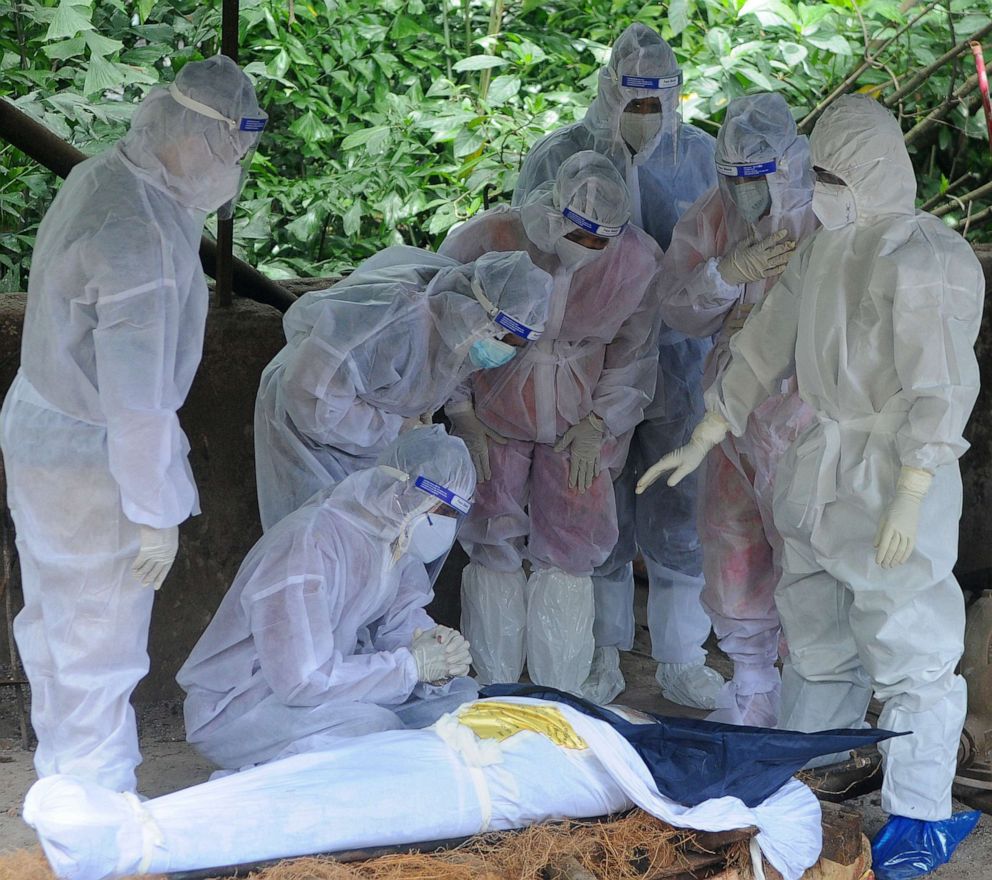India's staggering COVID-19 death toll could be 6 million: Study
The study suggests 6 million people may have died.
New research suggests that India’s COVID-19 death toll during its first and second waves might have been significantly undercounted, with the actual number potentially 12 times higher than the official stats -- over 6 million people.
That would be by far the highest COVID death toll in the world -- greater than the U.S. at more than 811,000.
India was devastated by a crushing wave of the delta variant in April and May, with supply shortages, makeshift clinics and images of funeral pyres burning nonstop.
There was a sense at the time that the number of deaths was an undercount and a study in July indicated that deaths could be 10 times the official toll, although that research had limitations.
The new study, by researchers in the U.S. and India from the Center for Disease Dynamics, Economics & Policy, a public health research institute in Washington, D.C., indicates that the “reported COVID-19 deaths greatly underestimated pandemic-associated mortality” and was particularly acute among older and poorer people.
According to government statistics, India logged 478,007 COVID-19 deaths from the beginning of the pandemic, marked at Jan. 3, 2020 to Dec. 21, 2021, and nearly 35 million cases during that time.
The study -- which is focused on the Chennai District on the country's southeast coast -- indicates the number is likely much higher, finding that that the death rate there was 5.2 per 1,000, "a 41% increase over typical mortality levels in the city.”

The study uses data on "all-cause mortality" within the district, i.e. the death rate from all causes of death for the population in the given time period are considered.
“On the nationwide figures, the 5.2 deaths per 1000 resident would indicate over 6 million deaths nationwide if the results could be extrapolated to the entire country,” Professor Ramanan Laxminarayan, an economist and epidemiologist and the study's lead author, told ABC News. He is the founder of the University of Washington's Center for Disease Dynamics, Economics and Policy in DC, which contributed to the project.
Deaths were substantially higher in older age groups.
Greater increases in mortality were observed in communities with lower socioeconomic status during the second wave of infections from March 1-June 30, 2021, but not during the first.
Laxminarayan said that there were limitations to the study -- Chennai, as an urban area, might have been more affected than many parts of the country which were rural.
“But by the same token, Chennai has some of the best public health and healthcare facilities in the country and so the mortality rates in Chennai were likely lower than in other parts of the country,” he added.
The study notes that the true burden of disease is still “uncertain” due to restrictions in disease surveillance and a lack of official death records.




